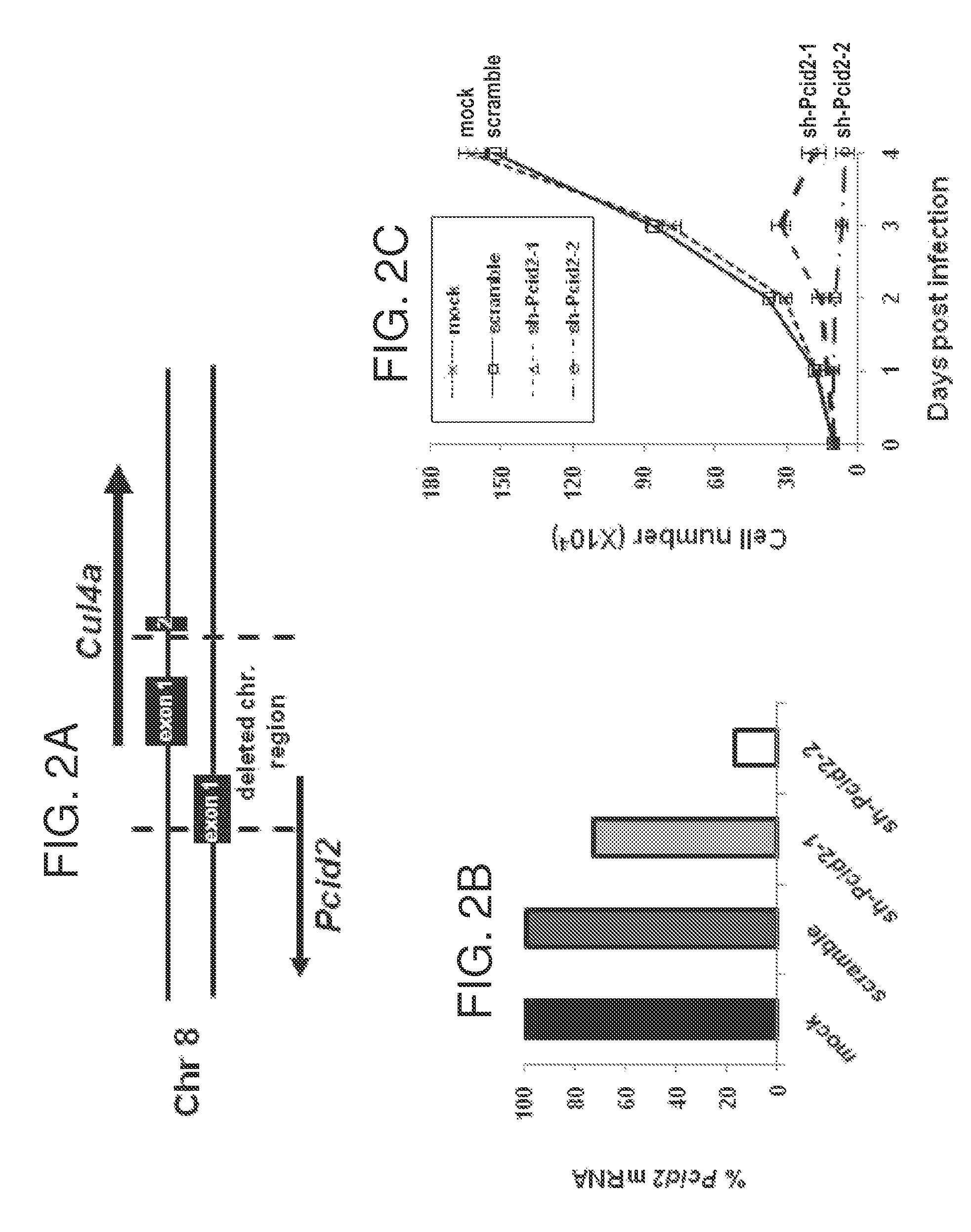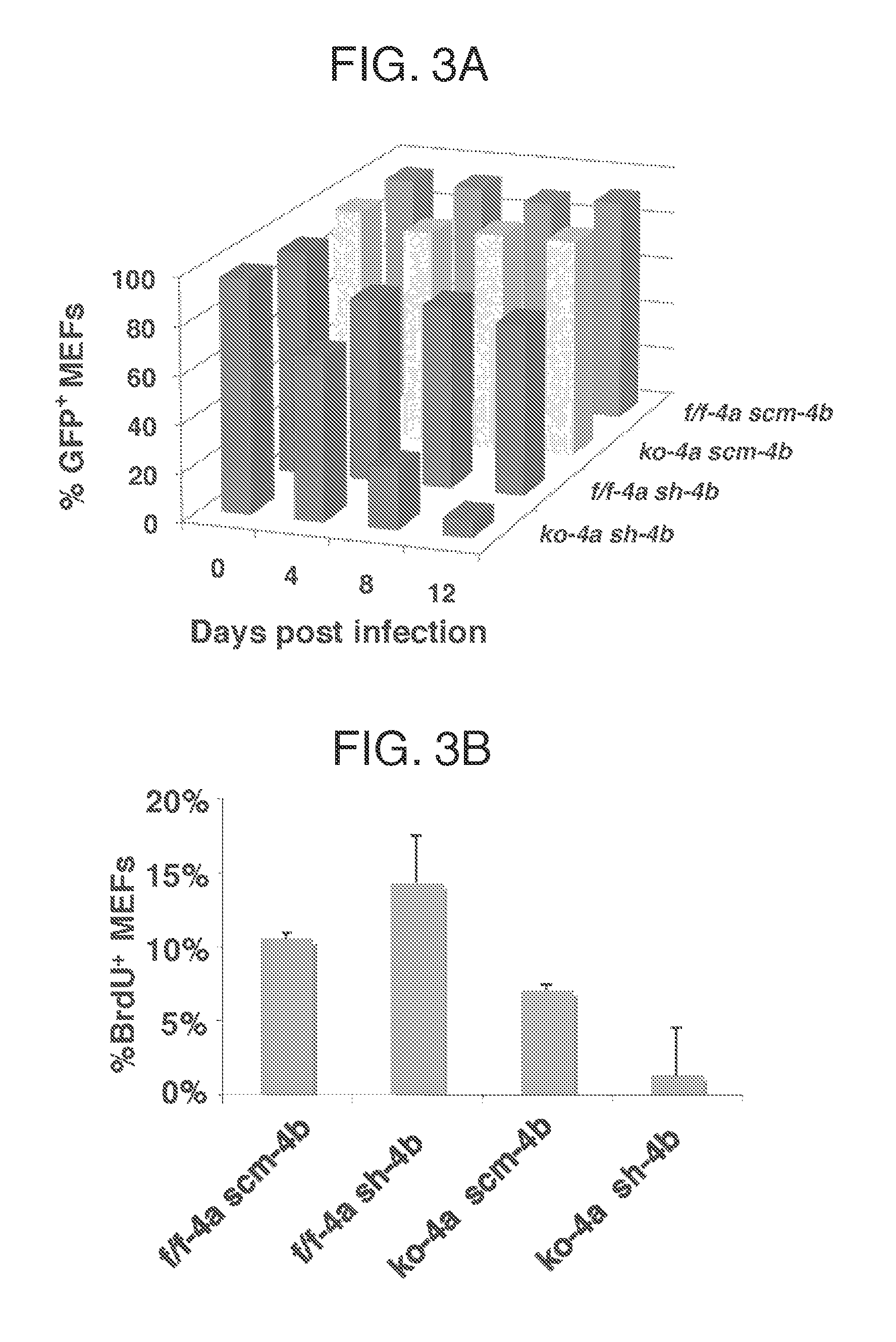Substances and compositions for enhancing DNA repair and methods of use
a technology of enhancing dna and compositions, applied in the preparation of sugar derivatives, dna/rna fragmentation, vectors, etc., can solve problems such as cancer development, and achieve the effect of enhancing the nucleotide excision repair activity
- Summary
- Abstract
- Description
- Claims
- Application Information
AI Technical Summary
Benefits of technology
Problems solved by technology
Method used
Image
Examples
example 1
[0092]This example demonstrates the generation of a Cul4 knockout (Cul4− / −) mouse and compares its phenotype to a previously disclosed Cul4a knockout mouse.
[0093]To generate the floxed Cul4a allele, the 129 genomic library (Invitrogen) was screened with a Cul4a cDNA probe. Five BAC clones were identified, and clone #297L07 was used to generate the final targeting construct. The targeting vector was generated by placing a LoxP site and the pSV-FLP-Cre neomycin resistance cassette 1.1 kb upstream of exon 17 and another LoxP site 300 bps downstream of exon 19. The 5′ and 3′ homologous arms were 3 kb and 5 kb, respectively, and were generated by EXL long-range PCR (Stratagene) from the BAC clone. Following electroporation and G418 selection, ES clones that underwent homologous recombination were identified by Southern blotting. Homologous recombination at the 5′ end was assessed by digesting ES cell genomic DNA with BamHI and hybridizing the Southern blot with a probe immediately upstre...
example 2
[0102]This example demonstrates the enhanced stability of DDB2, p21, and XPC in Cul4a deficient cells.
[0103]MEFs were isolated from embryonic day (E) 13.5 wild-type or Cul4a knockout embryos. shRNAs for murine Cul4b and Pcid2 as well as scrambled controls were subcloned into the FUGW lentiviral vector and expressed under the U6 promoter as described in Example 1. Recombinant shCul4b and shPcid2 lentiviruses were generated for infection of primary Cu / 4af / f and Cul4a− / − MEF cells. shRNA-containing FUGW lentivirus were added onto Cu / 4af / f and Cul4a− / − MEFs every 12 hours for 36 hours. The cells were harvested 48 hours post-infection, and Western blotting was performed on MEF extracts using antibodies against CUL4A (C-19, Santa Cruz Biotechnology), CUL-4B, DDB2 (Cell Signaling Technology, Danvers, Mass.), p21 (Santa Cruz Biotechnology), XPC, histone H3, and β-actin (Sigma, St. Louis, Mo.).
[0104]The half-life of DDB2 was determined by pulse-chase analysis in Cul4a− / − and Cu / 4af / f MEFs an...
example 3
[0112]This example demonstrates enhanced UV-damaged DNA binding (UV-DDB) and global genomic repair (GGR) activities in Cul4a deficient cells.
[0113]For the damaged DNA binding assay of UV-DDB activity, 2 μg of whole cell extract was incubated with a 32P-labeled DNA probe that was UV-irradiated at 5000 J / m2, and binding was assessed by electrophoretic mobility shift assay (Chen et al., J. Biol. Chem., 276: 48175-48182 (2001)).
[0114]The GGR ELISA assay of CPD and 6-4PP removal was performed as previously described (Chen et al., 2006) in primary Cul4a− / − (ko-4-a scm-4b), Cu / 4bk / d (f / f-4a sh-4b), and control Cu / 4af / f (f / f-4a scm-4-b) MEFs (FIG. 7B, ko, knockout; k / d, knockdown; scm, scramble). Briefly, exponentially growing MEF cells were irradiated with 10 J / m2 UV-C (254 nm) and either harvested immediately (0 hr) or allowed to repair for the duration indicated in FIG. 7B. Genomic DNA was isolated and quantified via liquid scintillation and fluorometric measurements of Hoechst-stained D...
PUM
| Property | Measurement | Unit |
|---|---|---|
| diameter | aaaaa | aaaaa |
| thickness | aaaaa | aaaaa |
| volume | aaaaa | aaaaa |
Abstract
Description
Claims
Application Information
 Login to View More
Login to View More - R&D
- Intellectual Property
- Life Sciences
- Materials
- Tech Scout
- Unparalleled Data Quality
- Higher Quality Content
- 60% Fewer Hallucinations
Browse by: Latest US Patents, China's latest patents, Technical Efficacy Thesaurus, Application Domain, Technology Topic, Popular Technical Reports.
© 2025 PatSnap. All rights reserved.Legal|Privacy policy|Modern Slavery Act Transparency Statement|Sitemap|About US| Contact US: help@patsnap.com



